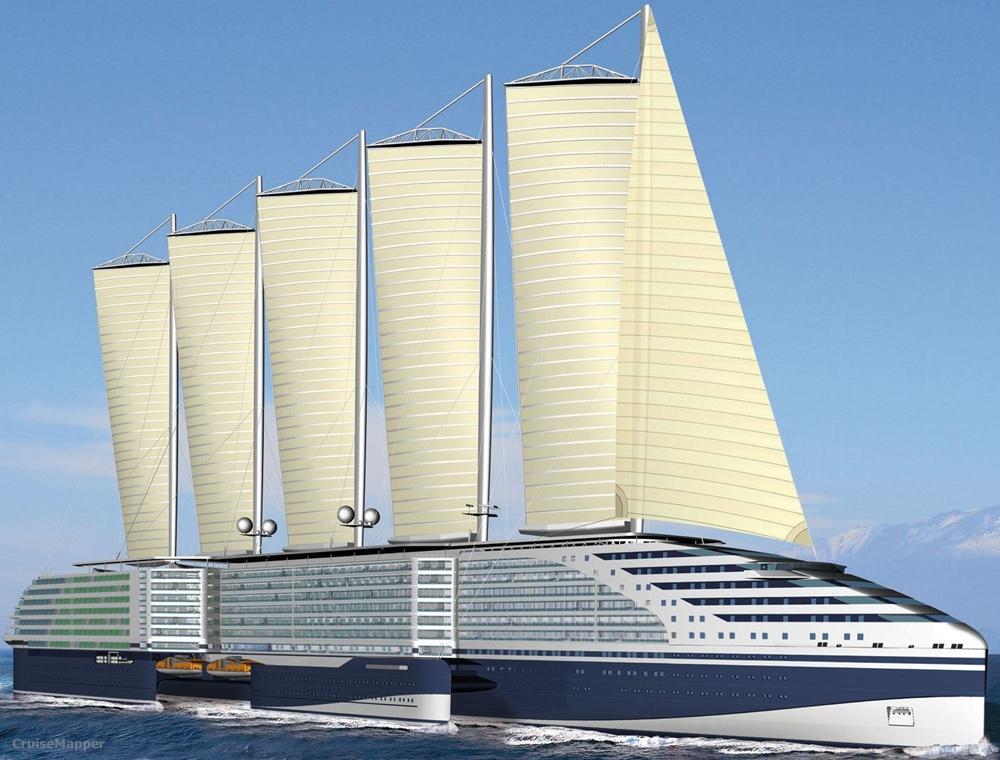On March 3, 2018, STX France revealed a carbon-free cruise vessel design (named Silenseas) using wind as main power source. The new wind-power technology will be trialled on Ponant's superyacht Le Ponant, on which one the existing sails will be replaced and the new technology tested.
STX France's project is something never done before. The carbon-free sailship design is an alternative to the popular hybrid powered vessels. Hydrogen and fuel cells are still expensive, plus hydrogen is not available in most ports.
The technology uses the company's patented "Solidsail" concept. The sails (total size up to 1200 m2 / 12900 ft2) are mounted on masts, but without any ropes or cables. The STX France design has 3 masts and 3 rigs, with masts rotating in order to adapt the sails to the wind. The new design also includes latest hybrid propulsion technologies, combining wind with LNG, and potentially batteries, solar panels and fuel cells.

The sailing ship can reach speeds of 12 knots (14 mph / 22 kph) under sail in 15 knots (17 mph / 28 kph) winds. In winds over 15 knots, vessel's propellers will be used, acting as turbine that draws power from the sails. On Caribbean Sea routes, the new technology could reduce propulsion energy by 60%.
STX France's sail-ship design was developed for 3 vessel sizes, the biggest being 15,000 GT tons ship with LOA length 190 m (620 ft) and 150 passenger staterooms. The French shipbuilding company started research in sail propulsion in 2009,
Similar is the concept of the new Peace Boat vessel Ecoship (built by Arctech Helsinki Shipyard in Helsinki, Finland).